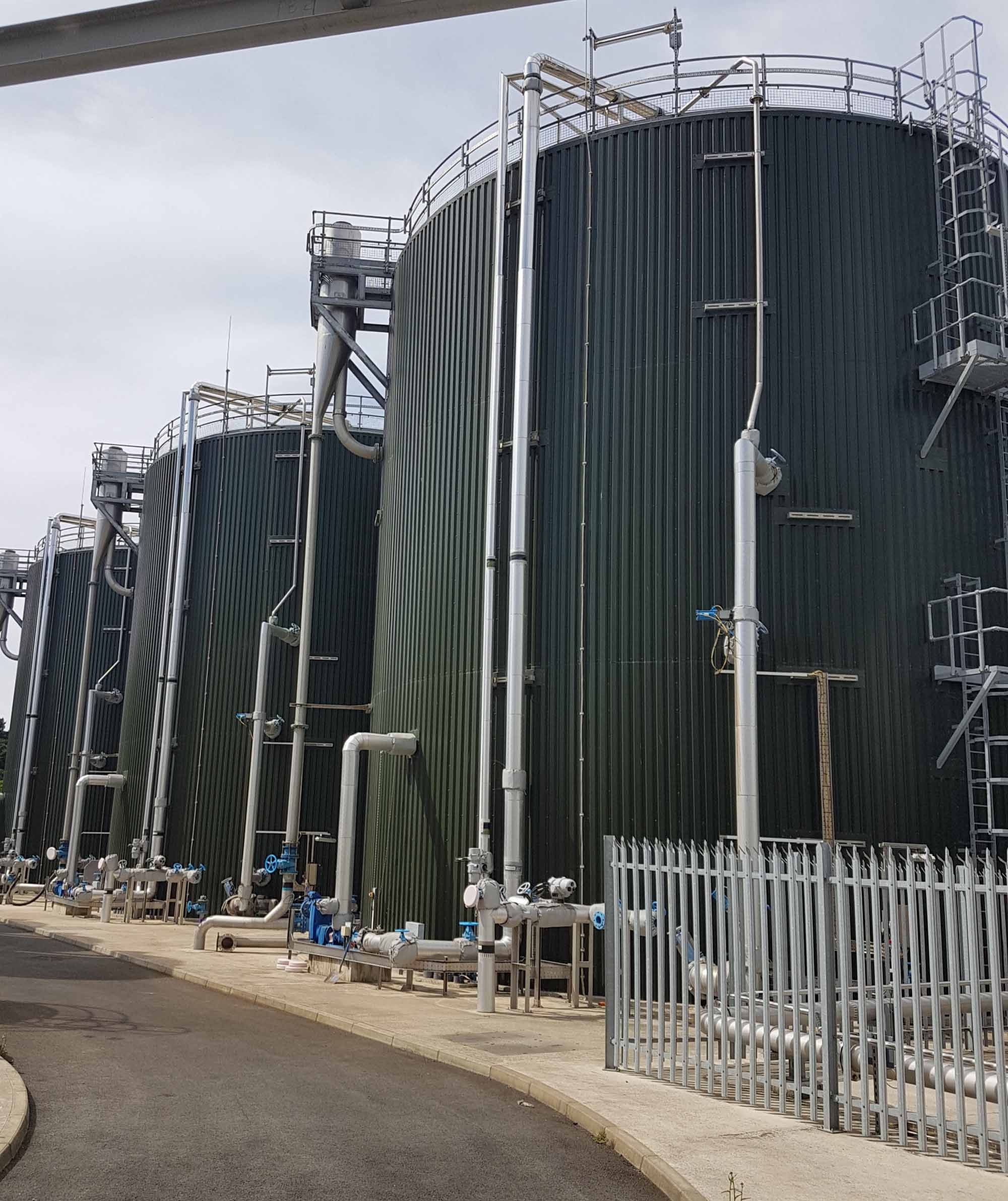Shining Sludge Plant In Jersey Sets Standards
The time came to replace the sludge plant (built in 1959) on Jersey’s STW to meet future environmental standards

The customer and main process engineering contractor soon found that their respective drivers to meet a 2035 design horizon had plenty in common.
From the outset, Jersey’s Department for Infrastructure, together with Doosan Enpure, knew that with the logistical challenges faced by the island, the aforementioned criteria of efficiency, ease of maintenance and high performance was crucial, particularly for the plant’s pumps and mixing systems. Fog or high winds can soon stop goods from reaching Jersey, so Bellozanne STW has to be self-sufficient – and have back-up.
“The new plant gave us the perfect opportunity to engineer out old unwanted problems”, said Bob King, Senior Engineer at the States of Jersey’s Department for Infrastructure.
“Previously, for example, we had an ongoing nightmare with very costly maintenance for compressors, which went down even if there was just a small amount of foam in our old gas mixing system. We also suffered with ragging and problems with pipework and fittings that simply weren’t of a design”.
‘All pipework and moving parts should be on the outside of the tank’
Weighing up Bellozanne’s drive towards a highly robust plant where downtime would be a thing of the past, Doosan Enpure were also busy sourcing kit that would meet key requirements, especially for low maintenance, as Michelle Macleod, Principal Mechanical Engineer explains:
“We certainly agreed straight away that for the three new anaerobic digesters, all pipework and moving parts should be on the outside of the tank”, she said.
Together with Gary Davies, Principal Engineer at Bellozanne STW, Bob King carried out several field trips to research suitable mixers, seeking equipment that would also mix the whole tank.
“Eventually we visited Landia in Denmark to see for ourselves” continued Bob, “As well as seeing the GasMix digester mixing system, the set-up and the people was impressive the moment we walked in”.
Doosan Enpure’s Michelle Macleod added: “Landia were very helpful because we wanted everything at ground level, meaning no access platforms at the side of the tanks. Operating times also came into the decision to choose Landia, rather than systems that run flat out”.
At the old Bellozanne plant, lime that caused a distinctive rotten fish odour was used to enhance the treatment of sludge – at a cost of £80,000pa but that expenditure has gone. Now there is Doosan Enpure’s established pasteurisation technology that holds the sludge at 55 degrees C for a minimum of 4 hours, prior to passing to the anaerobic digesters.
Gary Davies added: “Doosan Enpure are very good process people to work with, helping us achieve up to 500kW of electricity (and the same again in heat) – about £800 to £1,100 per day. The pasteurizers make a big positive difference in presenting the digesters with much better material. Further on in the process, we now have far less grit/silt and rag to deal with”.
Bellozanne and Doosan Enpure also chose Landia pumps for three separate tanks containing digested sludge, thickened sludge (fed to the digesters via pasteurizers) and unthickened sludge that comes off the final clarifiers, which is then thickened and added to the thickened tank to maximise overall residence time. As with the Landia chopper pumps on the GasMix systems of the three digesters, none has required any spare parts since being installed three years ago.
‘Good mixing is critical’
Dave Garnett, Technical Specialist (Wastewater) at Doosan Enpure says that Bellozanne is achieving high Volatile Solids (VS) destruction at an average of around 60%.
“Good mixing is critical with the high temperature feed to the digesters to make sure that everything is distributed properly”.
He added: “It is interesting that many digesters in the industry run on 2 to 2.5% solids, when with a simple retrofit to a superior mixing system, they could increase to 4% and see an immediate pay off”.
‘The digesters are being mixed properly’
Gary Davies agrees: “From a process point of view, the good mixing we have here with the Landia equipment is very important for consistency. It has a very positive knock-on effect all the way through, including that big reduction in grit/silt, because we can see that the digesters are being mixed properly.
He continued: “Overall, we now have a far more complex plant – yet our investment in quality equipment is saving us money. Not everybody understands the drivers when being on an island. No point supposedly saving £1M on CAPEX if it’s then going to cost you an extra £3M in maintenance. This plant’s performance proves that we are winning the argument”.
CONTACT
Paul Davies
Landia UK Ltd
info@landia.co.uk
www.landia.co.uk
+44 1948 661200
Friday 2 November 2018 / file under Engineering | Environmental | Utilities



